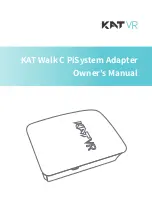
30
Using Your RAID Enclosure
Each RAID level provides different performance and protection. You should select a RAID level based on
the type of application, access, fault tolerance, and data you are storing.
The storage array supports RAID levels 0, 1, 5, and 10.
RAID 0
RAID 0 uses disk striping to provide high data throughput, especially for large files in an environment
that requires no data redundancy. RAID 0 breaks the data down into segments and writes each segment
to a separate physical disk. I/O performance is greatly improved by spreading the I/O load across many
physical disks. Although it offers the best performance of any RAID level, RAID 0 lacks data redundancy
(fault tolerance). Choose this option only for non-critical data, since failure of just one physical disk will
result in the loss of all data.
RAID 1
RAID 1 uses disk mirroring so that data written to one physical disk is simultaneously written to another
physical disk. This is recommended for small databases or other applications that do not require large
capacity. RAID 1 provides full data redundancy, meaning that if one disk fails, the mirrored disk
automatically maintains throughput with no data loss.
RAID 5
RAID 5 uses parity and striping data across all physical disks (distributed parity) to provide high data
throughput and data redundancy, especially for small random access. RAID 5 is the most versatile RAID
level and is suited for multi-user environments where typical I/O size is small and there is a high
proportion of read activity.
RAID 10
RAID 10, a combination of RAID 1 and RAID 0, uses disk striping across mirrored disks. It provides high
data throughput and complete data redundancy. Utilizing an even number of physical disks (four or
more) creates a RAID level 10 disk group and/or virtual disk. Since RAID levels 1 and 10 use disk
mirroring, half of the capacity of the physical disks is utilized for mirroring. This leaves the remaining
half of the physical disk capacity for actual storage. RAID 10 is automatically used when a RAID level of
1 is chosen with four or more physical disks.
RAID Level Usage
To ensure best performance, you should select an optimal RAID level when you create a system physical
disk. The optimal RAID level for your disk array depends on a number of factors, including:
•
Number of physical disks in the disk array
•
Capacity of the physical disks in the disk array
•
Need for redundant access to the data (fault tolerance)
•
Disk performance requirements
Summary of Contents for PowerVault MD3000
Page 68: ...68 Troubleshooting Your Enclosure ...
Page 100: ...100 Glossary ...
















































